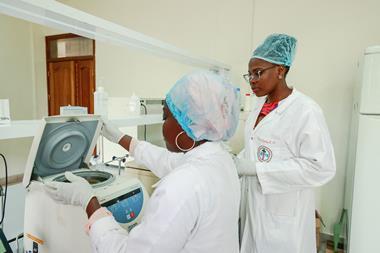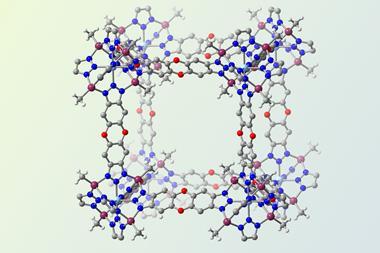From refinery scale to a nanosecond existence, carbon is everywhere – in life as well as chemistry
Whenever a character in a science fiction film or TV programme describes life as ‘carbon-based’, it always makes me groan a little inside. After all, our bodies are 60% water, and even DNA itself has more oxygen – by mass or atoms – in it than it does carbon.
But there’s no denying how important carbon and the many compounds containing it are to us as humans – let alone as chemists (even begrudgingly to inorganic ones like me). Sadly, our reliance on carbon-containing compounds, especially as fuel, has come at too high a cost. The carbon dioxide we have unsustainably released into the atmosphere has already warmed our planet and will continue to do so. Efforts to decarbonise our economy are progressing, of course, but where does that lave the places and people who produce carbon chemicals? That’s what Andy Extance’s feature on p48 looks at.
The UK’s oil refineries have shrunk from 18 in the 1970s to just six today – and that will become five later this year as the Grangemouth refinery on the Firth of Forth is scheduled to close. It’s notable that the refinery perhaps under least pressure is Humber, as it is one of the few places in Europe producing graphite coke for lithium-ion batteries. The feature also looks at whether hydrogen – either its production or use – could give the refineries a role in a lower-carbon future.
On a smaller scale – and a more appetising product – carbon dioxide is being captured by a metal–organic framework material after being produced by wine as it ferments (see p34). Although on a pilot scale, it’s great to see MOFs’ ‘killer application’ – gas absorption – finally be put to good use, as the captured gas can later be released at a food-grade level.
Carbon is sometimes used as shorthand for carbon dioxide – something I’ve probably already done in this article – but the element itself still has plenty to interest researchers. I remember as an undergraduate once needing to find a value for the enthalpy of sublimation of carbon for a calculation and being puzzled that the reference (a physical book, I’m afraid, in those days) didn’t have one.
That’s because carbon is almost invariably a solid, thanks to its exceptional ability to bond to itself. So it’s incredible to see that liquid carbon has been studied in a lab for the first time (see p36). It took a record-breaking laser heating sample to 7000K to create the liquid element for just a few nanoseconds.
While it might just about be possible to imagine an economy without carbon – at least in fuels – it’s impossible to imagine chemistry without its capital C.
Whenever a character in a science fiction film or TV programme describes life as ‘carbon-based’, it always makes me groan a little inside. After all, our bodies are 60% water, and even DNA itself has more oxygen – by mass or atoms – in it than it does carbon.

But there’s no denying how important carbon and the many compounds containing it are to us as humans – let alone as chemists (even begrudgingly to inorganic ones like me). Sadly, our reliance on carbon-containing compounds, especially as fuel, has come at too high a cost. The carbon dioxide we have released into the atmosphere has already warmed our planet and will continue to do so. Efforts to decarbonise our economy are progressing, of course, but where does that leave the places and people who produce carbon chemicals? That’s what Andy Extance’s recent feature How decarbonisation will help the UK’s last refineries survive looks at.
The UK’s oil refineries have shrunk from 18 in the 1970s to just six today – and that will become five later this year as the Grangemouth refinery on Scotland’s Firth of Forth is scheduled to close. It’s notable that the refinery perhaps under least pressure is Humber, as it is one of the few places in Europe producing graphite coke for lithium-ion batteries. The feature also looks at whether hydrogen – either its production or use – could give the refineries a role in a lower-carbon future.
On a smaller scale – and a more appetising product – the carbon dioxide released by fermenting wine is being captured by a metal–organic framework material. Although on a pilot scale, it’s great to see MOFs’ ‘killer application’ – gas absorption – finally be put to good use, as the captured gas can later be released at a food-grade purity.
Carbon is sometimes used as shorthand for carbon dioxide – something I’ve probably already done in this article – but the element itself still has plenty to interest researchers. I remember as an undergraduate once needing to find a value for the enthalpy of sublimation of carbon for a calculation and being puzzled that the reference (a physical book, I’m afraid, in those days) didn’t have one.
That’s because carbon is almost invariably a solid, thanks to its exceptional ability to bond to itself. So it’s incredible to see that liquid carbon has been studied in a lab for the first time. It took a record-breaking laser heating sample to 7000K to create the liquid element for just a few nanoseconds.
While it might just about be possible to imagine an economy without carbon – at least in fuels – it’s impossible to imagine chemistry without its capital C.

















No comments yet